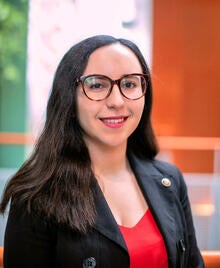
Sara Issaoun is an NHFP Einstein Fellow at the Center for Astrophysics | Harvard & Smithsonian and a member of the Event Horizon Telescope collaboration. Her research centers around the collection, calibration, and imaging of millimeter-wave radio observations of supermassive black holes. Sara aims to expand millimeter-wave radio imaging capabilities and forge strong connections between the first images of supermassive black hole shadows and physics probed by partner facilities across the electromagnetic spectrum. Multi-wavelength constraints on black hole accretion flow properties will critically inform the scientific interpretation of images of black hole shadows, our understanding of jet-launching mechanisms, black hole spin measurements, and, ultimately, precision tests of General Relativity.
Talk title and abstract
Our supermassive black hole Sagittarius A* across the radio band
Last Spring, the Event Horizon Telescope collaboration revealed the first images of the shadow of our Milky Way supermassive black hole, Sagittarius A* (Sgr A*). Since its detection in the mid-70s, this bright radio source in the Galactic Center was shrouded in a veil of mystery. The Nobel-awarded stellar orbits research in the Galactic Center pinned down its mass and distance, showing evidence of an extremely compact 4 million-solar-mass object at the heart of our Galaxy. The EHT then provided the first direct evidence that this object is indeed a black hole and resolved its shadow for the first time. In this talk, I will explain the challenges of imaging Sgr A* and how these were overcome by the EHT, and I will walk through important milestones of discovery across the radio band that laid the foundation for the first image of our black hole.
This will be a hybrid seminar. If you would like to join in person, please meet in the Physics building (Room 308). Would you like to join this seminar via Zoom? Please email WCA.